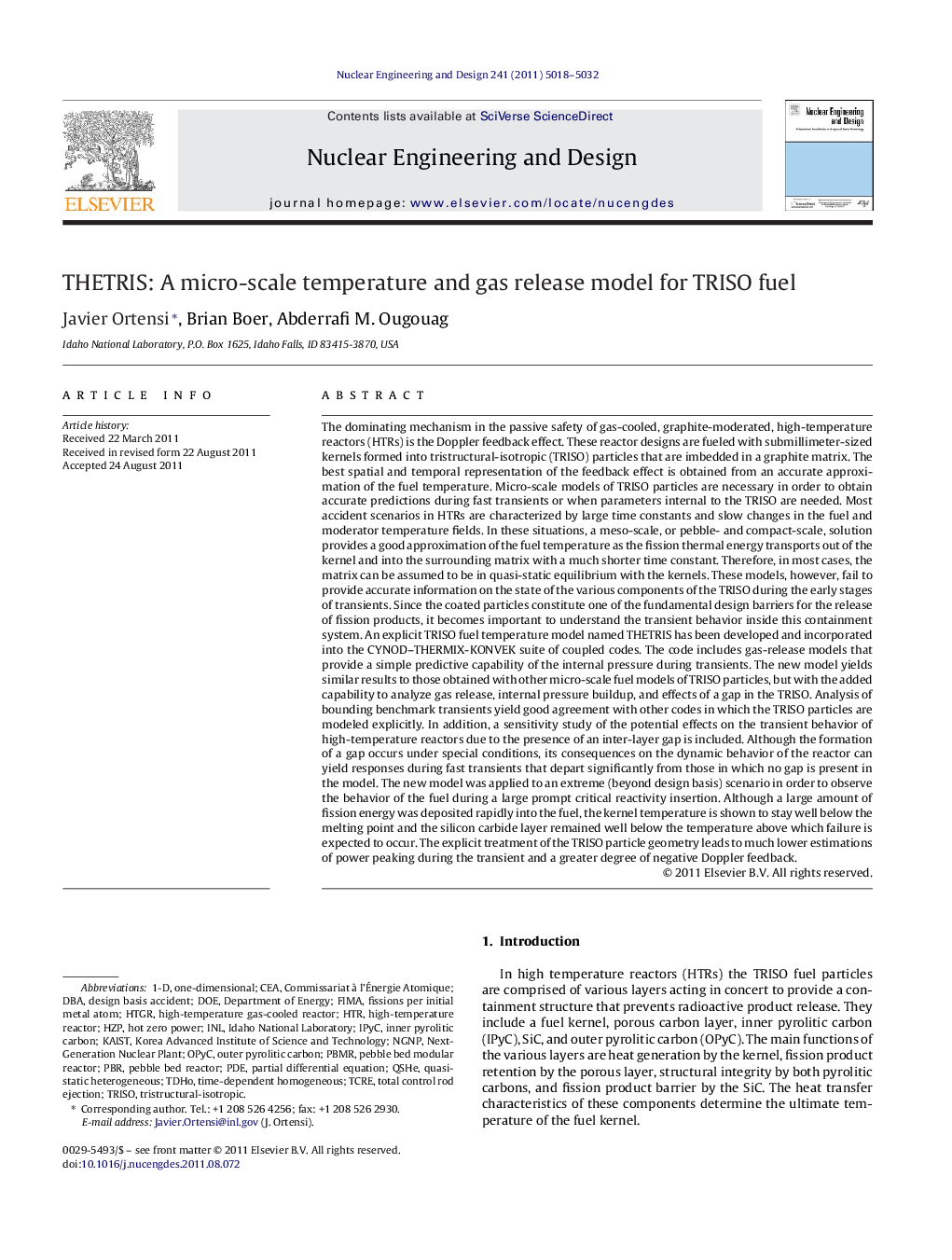| Article ID | Journal | Published Year | Pages | File Type |
|---|---|---|---|---|
| 297615 | Nuclear Engineering and Design | 2011 | 15 Pages |
The dominating mechanism in the passive safety of gas-cooled, graphite-moderated, high-temperature reactors (HTRs) is the Doppler feedback effect. These reactor designs are fueled with submillimeter-sized kernels formed into tristructural-isotropic (TRISO) particles that are imbedded in a graphite matrix. The best spatial and temporal representation of the feedback effect is obtained from an accurate approximation of the fuel temperature. Micro-scale models of TRISO particles are necessary in order to obtain accurate predictions during fast transients or when parameters internal to the TRISO are needed. Most accident scenarios in HTRs are characterized by large time constants and slow changes in the fuel and moderator temperature fields. In these situations, a meso-scale, or pebble- and compact-scale, solution provides a good approximation of the fuel temperature as the fission thermal energy transports out of the kernel and into the surrounding matrix with a much shorter time constant. Therefore, in most cases, the matrix can be assumed to be in quasi-static equilibrium with the kernels. These models, however, fail to provide accurate information on the state of the various components of the TRISO during the early stages of transients. Since the coated particles constitute one of the fundamental design barriers for the release of fission products, it becomes important to understand the transient behavior inside this containment system. An explicit TRISO fuel temperature model named THETRIS has been developed and incorporated into the CYNOD–THERMIX-KONVEK suite of coupled codes. The code includes gas-release models that provide a simple predictive capability of the internal pressure during transients. The new model yields similar results to those obtained with other micro-scale fuel models of TRISO particles, but with the added capability to analyze gas release, internal pressure buildup, and effects of a gap in the TRISO. Analysis of bounding benchmark transients yield good agreement with other codes in which the TRISO particles are modeled explicitly. In addition, a sensitivity study of the potential effects on the transient behavior of high-temperature reactors due to the presence of an inter-layer gap is included. Although the formation of a gap occurs under special conditions, its consequences on the dynamic behavior of the reactor can yield responses during fast transients that depart significantly from those in which no gap is present in the model. The new model was applied to an extreme (beyond design basis) scenario in order to observe the behavior of the fuel during a large prompt critical reactivity insertion. Although a large amount of fission energy was deposited rapidly into the fuel, the kernel temperature is shown to stay well below the melting point and the silicon carbide layer remained well below the temperature above which failure is expected to occur. The explicit treatment of the TRISO particle geometry leads to much lower estimations of power peaking during the transient and a greater degree of negative Doppler feedback.
► Doppler feedback dominates feedback effect in high temperature reactors. ► Accurate representation of the fuel temperature is needed. ► THETRIS, a micro-scale heat transfer model has been developed to provide more accurate measure of the fuel temperatures in TRISO fuel. ► Gas release models were added to the fuel temperature model to determine internal gas pressures during accident conditions. ► Paper includes results from a total control rod ejection accident in the PBMR-400 reactor. ► Fuel temperatures rise sharply during the event but the internal TRISO pressures remain below 30 MPa.
